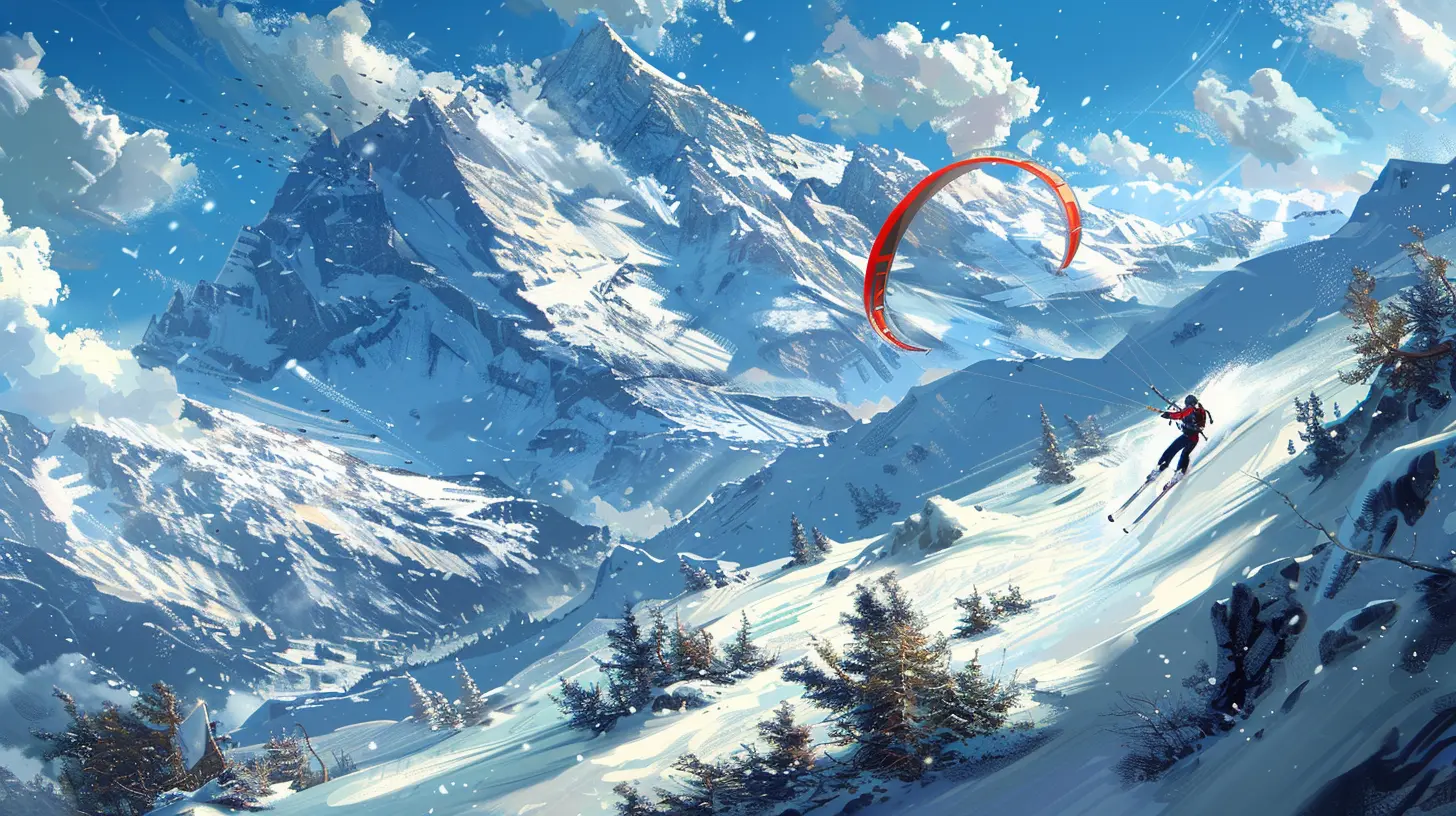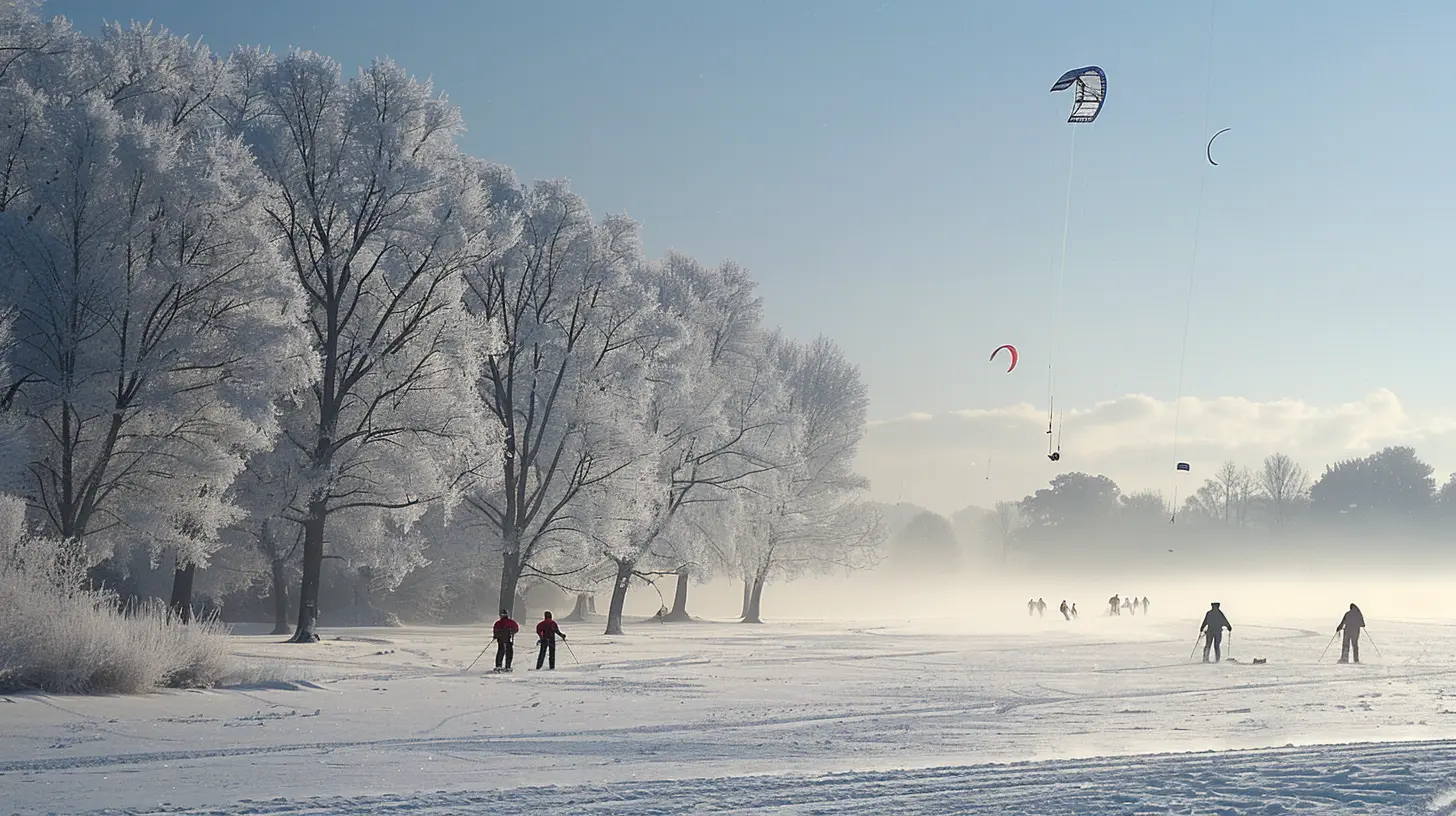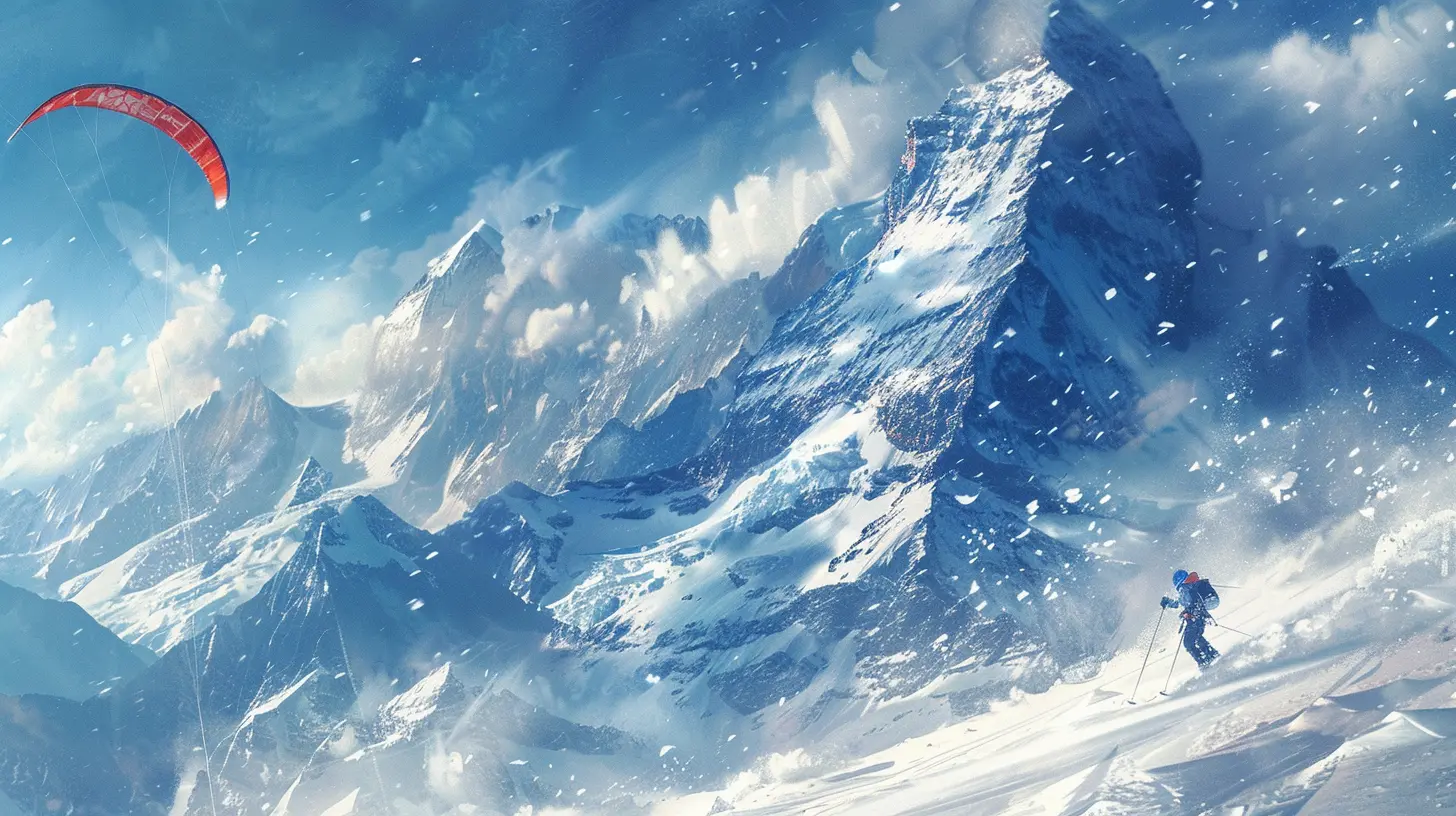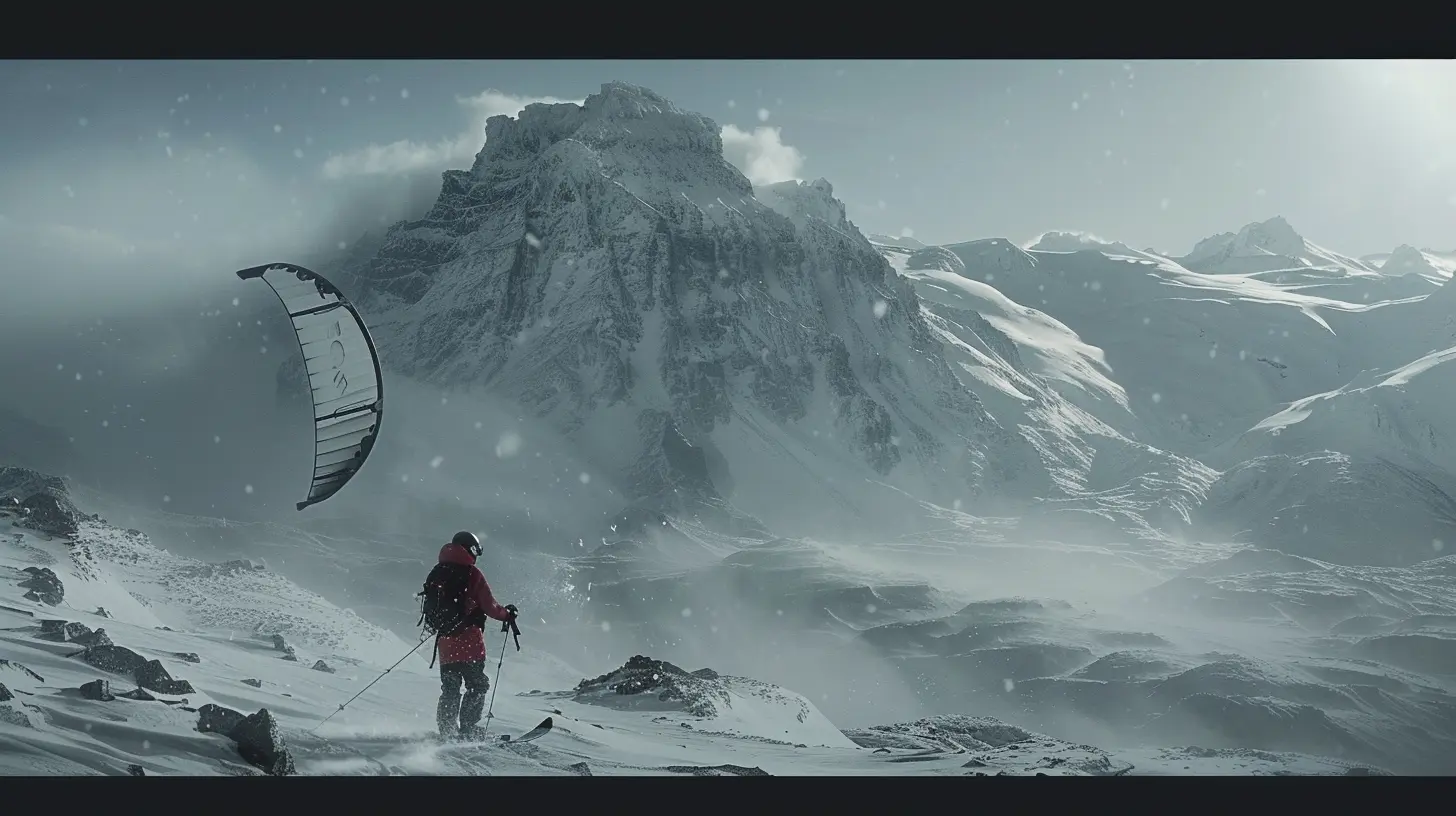Snowkiting: The Coolest Winter Sport You’ve Never Tried
18 October 2025
When you think of winter sports, what comes to mind first? Skiing? Snowboarding? Maybe ice skating? These are classics, sure—but let’s be honest, they’re so expected. What if I told you there’s a wild, adrenaline-packed winter activity that throws wind, snow, and your sense of balance into a blender and spits out something insanely fun?
Enter snowkiting—the coolest winter sport you’ve never tried (yet).
Sounds extreme? That’s because it is. Think of it as a mashup of snowboarding, kite surfing, and flying...on snow. And trust me, once you get a taste of it, you’ll never look at winter the same way again.
What Is Snowkiting, Anyway?
So, let’s break this down: snowkiting is a sport where you strap yourself into skis or a snowboard, harness yourself to a massive kite, and let the wind pull you across snowy landscapes—flat or hilly. It’s like kiteboarding, but instead of waves, you’re carving up powder.You don’t need a mountain. You don’t need a ski lift. All you need is wind, snow, a kite, and a touch of adventure in your blood.
Sounds simple, right? Well, there’s a bit more to it, but that’s the gist. And the best part? Once you’ve got the basics down, you’re free to explore wide-open snowy plains, launch into airtime, or cruise through untouched backcountry. It’s you, the kite, and nature—no crowds, no chaos, just pure, heart-pounding freedom.
How Snowkiting Works (Without Getting Too Nerdy)
Alright, for the curious minds, here’s how snowkiting does its magic.- The Kite: This isn’t your cute little beach kite. It’s usually a foil or inflatable power kite that catches the wind and gives you that forward pull—and sometimes, vertical lift.
- The Harness: Think of this as your seatbelt. It hooks you into the kite and distributes the pull across your body so your arms don’t burn out in two minutes.
- Skis or Snowboard: Your choice—both work. Some prefer skis for better maneuverability, others go with a snowboard for that surfy glide feel.
- The Wind: The real MVP here. Too little and you’re stuck. Too much and you’ll feel like Dorothy in the tornado. But just right? You’re flying.
You control your speed, direction, and even your airtime with a combo of kite steering and edging with your board or skis. It takes a little practice, but it’s way more intuitive than you’d think.
Why Snowkiting Is Absolutely Worth Trying
Still not sold? Let me hit you with the reasons why snowkiting might just be your next obsession.1. It’s Mind-Blowingly Freeing
Ever snowboarded across a frozen lake with nothing but wind pushing you? It’s surreal. There’s no lift line, no babbling tourists, no rules. Just you, the wind, and the snow.2. You Don’t Need a Mountain
Seriously—flat fields, frozen lakes, beaches covered in snow (hello, Iceland), you name it. As long as it’s snowy and windy, it’s game on.3. It’s a Serious Workout
Snowkiting demands balance, strength, coordination, and endurance. Expect your legs, core, and even your brain to get a solid session in.4. The Learning Curve Is Surprisingly Chill
If you’ve ever flown a kite or snowboarded, you’re already halfway there. With a few lessons and a good instructor, you could be zipping around in a couple of days.5. The Adrenaline Is Next-Level
Want to fly 20 feet in the air, do a spin, and land it like a boss? Snowkiting has your back. Tricks, jumps, speed—it’s got them all.
What You Need to Get Started
Ready to join the snowkiting tribe? Cool. Here’s what you’ll need before jumping in:✅ Gear Essentials
- Kite: A foil kite is common for beginners, as it’s safer and easier to handle.- Harness: Get a seat or waist harness that fits snug and distributes weight well.
- Skis or Snowboard: Use whatever you’re comfortable with. Snowboarders should stick to flatter terrain at first.
- Helmet and Safety Gear: Always. No debates.
- Proper Winter Clothes: Waterproof outer layers, warm base layers, gloves, and goggles.
✅ Take a Lesson (Do It!)
Even if you’re a seasoned skier or kiteboarder, snowkiting is a different beast. A lesson or two will teach you proper kite control, safety, and how not to get dragged into a tree.✅ Find the Right Spot
Look for wide open snowy fields or frozen lakes with steady wind. Avoid crowded areas, power lines, trees, and any hidden terrain traps (like weak ice or unexpected drops).Safety First, Daredevil
Yeah, we’re all about the thrill here—but not at the cost of common sense. Snowkiting, like any sport, has risks. Here are a few tips to keep things smart:- Check the Wind: Gusty or strong winds can make things sketchy. Ideal wind is steady and between 10–25 knots (depending on your kite size).
- Don’t Kite Alone: Always have a buddy or someone who knows where you are.
- Know Your Release System: Every kite has a quick-release for emergencies. Know it like the back of your hand.
- Watch the Terrain: Hidden rocks, barbed wire fences, or thin ice = serious trouble.
- Dress Warm (and Dry): Hypothermia’s not a good look, trust me.
Snowkiting vs. Other Winter Sports
Wondering how it stacks up next to skiing or snowboarding? Let’s break it down.| Feature | Snowkiting | Skiing/Snowboarding |
|------------------|-------------------|----------------------|
| Needs a Mountain | Nope | Yep |
| Terrain | Flat or hilly | Mostly downhill |
| Lift Required | Wind only | Chairlift/pass |
| Crowds | Rare | Often crowded |
| Adrenaline | Sky-high | High |
| Learning Curve | Moderate | Moderate |
| Cost Long-Term | Lower (no lift pass)| Higher |
In short: snowkiting is not only more flexible terrain-wise, but also potentially easier on your wallet in the long run.
Best Places in the World to Snowkite
Alright, now that you’re fired up, here’s where the magic happens. These are some of the top spots globally for snowkiting:🇺🇸 Montana, USA
Snow-covered prairies, reliable wind, and zero crowds. It’s a snowkiter’s dream playground.🇨🇦 Alberta, Canada
Frozen lakes like Abraham Lake offer jaw-dropping views and space for days.🇮🇸 Iceland
Snowkiting across volcanic landscapes and along snowy coastlines? Yes, please.🇳🇴 Hardangervidda, Norway
It’s basically snowkiting’s home turf. Strong, steady winds and massive open plateaus.🇸🇪 Sweden’s Lapland
Stunning arctic wilderness, northern lights, and perfect snowkiting terrain.Getting Into the Snowkiting Community
The best part? You’re not alone. The snowkiting community is filled with passionate, adventurous folks who are more than happy to show newbies the ropes (literally). You’ll find them on forums, social media groups, and at snowkite festivals around the world.Events like the Red Bull Ragnarok in Norway are legendary and attract top riders from every corner of the globe.
Want to start local? Search for snowkiting meetups or lessons near you. Odds are, there’s a hidden community of kite junkies in your area just waiting to welcome you into the fold.
Final Thoughts: Why Wait?
Let’s be real—winter can feel long, cold, and dull if all you’re doing is scraping ice off your windshield and binge-watching Netflix.Snowkiting turns all that on its head. It makes winter thrilling, dynamic, and—dare I say—your new favorite season.
So if you’re looking to spice up your winter with something that’s part extreme sport, part nature escape, and 100% epic... maybe it’s time to give snowkiting a shot.
Who knows? Your snowboard might just start collecting dust.
FAQs About Snowkiting
1. Is snowkiting safe for beginners?Yes, as long as you take lessons and follow safety guidelines. Wind conditions and terrain awareness are key.
2. Do I need to be super fit?
Not necessarily. A decent level of fitness helps, but you don’t need to be an athlete to have fun.
3. How much does snowkiting gear cost?
Starter kits (kite, harness, bar) can range from $800 to $2,000. You can often rent gear or buy used when starting out.
4. Can I snowkite on any snow surface?
Almost. Flat, open areas with hard-packed snow or frozen lakes are best. Avoid deep powder unless you’re experienced.
5. How long does it take to learn snowkiting?
Most people can get the hang of basic kite control in a day or two. Becoming proficient takes time, but progress comes quickly with practice.
all images in this post were generated using AI tools
Category:
Extreme SportsAuthor:

Uziel Franco
Discussion
rate this article
1 comments
Hannah Kirk
Snowkiting: where you combine snow, wind, and a chance to embarrass yourself stylishly!
October 22, 2025 at 2:46 AM

Uziel Franco
Thanks for the fun comment! Snowkiting truly is a thrilling blend of adventure and style—embracing the challenge makes it all the more exciting!


